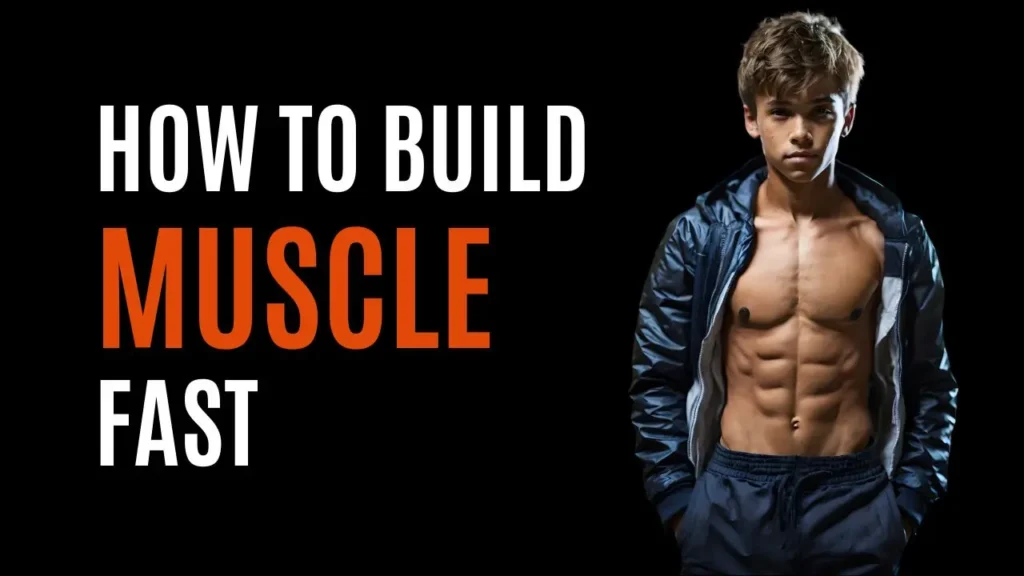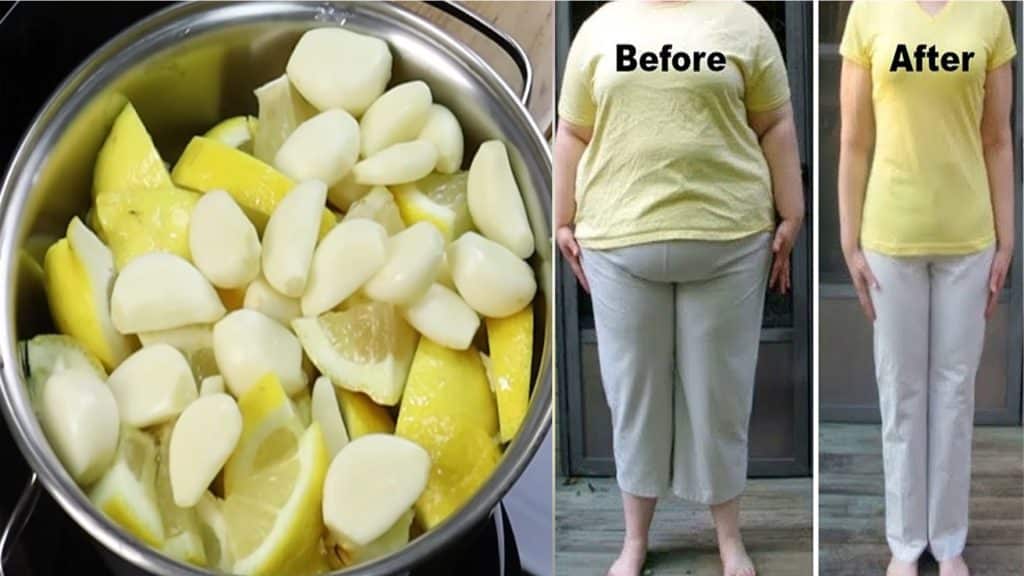Achieving noticeable muscle gain in just one month might sound like a lofty goal, but with the right approach, it’s entirely possible. This comprehensive guide will walk you through the steps needed to transform your body and build muscle effectively within 30 days. We’ll cover everything from setting realistic goals to designing a workout plan, optimizing your diet, ensuring proper recovery, and maintaining motivation. By the end of this article, you’ll have all the tools and knowledge you need to embark on your muscle-building journey.
Setting Realistic Goals
Understanding Body Transformation
Transforming your body in one month requires a clear understanding of what’s achievable within this timeframe. While it’s unlikely to gain a massive amount of muscle in just 30 days, you can certainly make noticeable improvements in muscle tone and strength. Setting realistic expectations will keep you motivated and focused.
Short-term vs. Long-term Goals
It’s crucial to differentiate between short-term and long-term goals. Short-term goals, like gaining a few pounds of muscle or increasing your bench press by 10-20 pounds, are achievable within a month. Long-term goals, such as dramatically changing your physique, require consistent effort over several months or years.
Personal Assessment
Before you begin, assess your current fitness level. Take measurements, note your weight, and take “before” photos. This baseline will help you track your progress. Additionally, consider any limitations or health conditions that might affect your ability to follow an intense workout regimen.
Fitness Assessment Tools
- Body Measurements: Use a tape measure to record the circumference of your chest, arms, waist, hips, and thighs.
- Body Weight: Weigh yourself first thing in the morning on an empty stomach for consistency.
- Body Fat Percentage: Use calipers, a body fat scale, or visit a professional for accurate measurement.
- Strength Tests: Record your max reps or one-rep max for key exercises like squats, deadlifts, and bench press.
Setting SMART Goals
- Specific: Define exactly what you want to achieve (e.g., gain 5 pounds of muscle, increase bench press by 20 pounds).
- Measurable: Use concrete numbers to track your progress.
- Achievable: Set goals that are challenging but realistic.
- Relevant: Ensure your goals align with your overall fitness objectives.
- Time-bound: Establish a clear timeframe (one month).

Designing an Effective Workout Plan
Focus on Compound Movements
Compound exercises work multiple muscle groups simultaneously, making them highly effective for muscle growth. Key exercises include:
- Squats: Target quads, hamstrings, glutes, and core.
- Deadlifts: Work lower back, glutes, hamstrings, and traps.
- Bench Press: Engage chest, triceps, and shoulders.
- Pull-Ups: Strengthen back, biceps, and forearms.
- Rows: Develop the upper back and biceps.
Benefits of Compound Exercises
- Efficiency: Work multiple muscle groups in a single movement.
- Hormonal Response: Increase the release of growth hormones.
- Functional Strength: Improve overall body coordination and balance.
- Caloric Burn: Burn more calories during and after your workout.
Workout Frequency and Split
For optimal muscle growth, aim to work out 4-5 days per week. Consider a split routine that targets different muscle groups on different days. Here’s a sample split:
- Day 1: Chest and Triceps
- Day 2: Back and Biceps
- Day 3: Rest or Active Recovery
- Day 4: Legs and Core
- Day 5: Shoulders and Arms
- Day 6: Full Body
- Day 7: Rest
Sample Weekly Workout Plan
To maximize muscle gain, it’s essential to follow a well-structured workout plan. Here’s a detailed weekly plan:
Day 1: Chest and Triceps
- Bench Press: 4 sets of 8-12 reps
- Start with a warm-up set, then progressively increase the weight.
- Incline Dumbbell Press: 3 sets of 10-12 reps
- Focus on a controlled motion to engage the upper chest.
- Tricep Dips: 3 sets of 10-12 reps
- Use parallel bars; add weight if needed.
- Cable Flyes: 3 sets of 12-15 reps
- Ensure a full range of motion to stretch and contract the chest muscles.
- Tricep Pushdowns: 3 sets of 12-15 reps
- Use a rope attachment for better tricep activation.
Day 2: Back and Biceps
- Deadlifts: 4 sets of 6-8 reps
- Maintain proper form to prevent injury.
- Pull-Ups: 4 sets of 8-12 reps
- Use different grips to target various parts of the back.
- Bent-Over Rows: 3 sets of 10-12 reps
- Keep your back straight and pull the barbell to your waist.
- Bicep Curls: 3 sets of 12-15 reps
- Use dumbbells or a barbell; focus on form.
- Hammer Curls: 3 sets of 12-15 reps
- Engage both the biceps and forearms.
Day 3: Rest or Active Recovery
- Light cardio, stretching, or yoga to enhance recovery.
Day 4: Legs and Core
- Squats: 4 sets of 8-12 reps
- Go deep to engage all leg muscles.
- Leg Press: 3 sets of 10-12 reps
- Focus on pushing through your heels.
- Lunges: 3 sets of 12-15 reps per leg
- Use dumbbells for added resistance.
- Leg Curls: 3 sets of 12-15 reps
- Target the hamstrings.
- Planks: 3 sets of 1 minute
- Maintain a straight body line and engage the core.
Day 5: Shoulders and Arms
- Shoulder Press: 4 sets of 8-12 reps
- Can be performed with a barbell or dumbbells.
- Lateral Raises: 3 sets of 12-15 reps
- Keep your elbows slightly bent.
- Front Raises: 3 sets of 12-15 reps
- Use a controlled motion.
- Bicep Curls: 3 sets of 12-15 reps
- Ensure full range of motion.
- Tricep Dips: 3 sets of 12-15 reps
- Focus on controlled movement.
Day 6: Full Body
- Clean and Press: 4 sets of 8-12 reps
- Incorporate a power move for overall strength.
- Pull-Ups: 4 sets of 8-12 reps
- Mix grips to engage different back muscles.
- Squats: 4 sets of 8-12 reps
- Use your body weight or add a barbell for resistance.
- Bench Press: 4 sets of 8-12 reps
- Focus on proper form and breathing.
- Deadlifts: 4 sets of 8-12 reps
- Keep your core engaged throughout.
Day 7: Rest
- Complete rest or light stretching.
Progressive Overload
Progressive overload is the principle of gradually increasing the weight, frequency, or number of repetitions in your strength training routine. This approach ensures continuous muscle growth. Track your workouts and aim to increase your weights or reps each week.
Methods to Implement Progressive Overload
- Increase Weight: Gradually add more weight to your lifts.
- Increase Repetitions: Add more reps to your sets.
- Increase Sets: Add additional sets to your workout.
- Decrease Rest Time: Shorten the rest period between sets to increase intensity.
- Improve Form: Focus on perfecting your technique to increase muscle engagement.
Nutrition for Muscle Gain
Macronutrient Breakdown
To build muscle, your diet should be rich in protein, carbohydrates, and healthy fats. Here’s a breakdown of each macronutrient:
- Proteins: Essential for muscle repair and growth. Aim for 1.0-1.5 grams of protein per pound of body weight. Good sources include chicken, fish, lean beef, eggs, and plant-based proteins.
- Carbohydrates: Provide energy for your workouts and aid in recovery. Focus on complex carbs like whole grains, oats, sweet potatoes, and vegetables.
- Fats: Necessary for hormone production and overall health. Include healthy fats from sources like avocados, nuts, seeds, and olive oil.
Importance of Protein
Proteins are the building blocks of muscle tissue. They provide the amino acids necessary for muscle repair and growth. Consuming adequate protein ensures your muscles can recover and grow after intense workouts.
Importance of Carbohydrates
Carbohydrates are the body’s primary energy source. They fuel your workouts and replenish glycogen stores in your muscles. Consuming enough carbs ensures you have the energy needed for intense training sessions.
Importance of Fats
Fats play a crucial role in hormone production, including
testosterone, which is vital for muscle growth. Healthy fats also support overall health and provide a long-lasting energy source.
Caloric Surplus
To gain muscle, you need to consume more calories than you burn. Calculate your Total Daily Energy Expenditure (TDEE) and aim for a caloric surplus of 250-500 calories per day. This ensures you have enough energy for muscle growth without gaining excess fat.
Calculating TDEE
- Basal Metabolic Rate (BMR): Estimate the number of calories your body needs at rest.
- Men: BMR = 66 + (6.23 × weight in pounds) + (12.7 × height in inches) – (6.8 × age in years)
- Women: BMR = 655 + (4.35 × weight in pounds) + (4.7 × height in inches) – (4.7 × age in years)
- Activity Level: Multiply your BMR by an activity factor:
- Sedentary (little or no exercise): BMR × 1.2
- Lightly active (light exercise/sports 1-3 days/week): BMR × 1.375
- Moderately active (moderate exercise/sports 3-5 days/week): BMR × 1.55
- Very active (hard exercise/sports 6-7 days a week): BMR × 1.725
- Super active (very hard exercise/sports & physical job): BMR × 1.9
- Caloric Surplus: Add 250-500 calories to your TDEE to support muscle growth.
Meal Timing and Frequency
Eat regularly throughout the day to keep your energy levels stable and support muscle growth. Aim for 5-6 small meals or snacks, including:
- Pre-Workout Meal: Focus on carbs and protein to fuel your workout.
- Post-Workout Meal: Consume protein and carbs within 30 minutes after exercising to kickstart recovery.
- Evening Meal: Include a mix of protein and fats to sustain muscle repair overnight.
Pre-Workout Nutrition
- Carbohydrates: Provide the necessary energy for your workout.
- Examples: Oats, fruits, whole-grain bread.
- Protein: Supports muscle maintenance during exercise.
- Examples: Greek yogurt, lean meat, protein shake.
Post-Workout Nutrition
- Protein: Repairs and rebuilds muscle fibers.
- Examples: Whey protein shake, chicken breast, cottage cheese.
- Carbohydrates: Replenishes glycogen stores.
- Examples: Rice, sweet potatoes, fruits.
Sample Meal Plan
Breakfast
- Option 1: Scrambled eggs with spinach and whole-grain toast
- Option 2: Greek yogurt with berries and honey
Mid-Morning Snack
- Option 1: Protein shake with banana and almond butter
- Option 2: Apple with a handful of almonds
Lunch
- Option 1: Grilled chicken breast with quinoa and steamed vegetables
- Option 2: Turkey sandwich on whole-grain bread with a side salad
Afternoon Snack
- Option 1: Cottage cheese with pineapple
- Option 2: Handful of nuts and dried fruits
Dinner
- Option 1: Baked salmon with sweet potato and broccoli
- Option 2: Stir-fried tofu with brown rice and mixed vegetables
Evening Snack
- Option 1: Casein protein shake
- Option 2: Small serving of cottage cheese with sliced cucumber
Importance of Rest and Recovery
Role of Sleep
Adequate sleep is crucial for muscle recovery and growth. Aim for 7-9 hours of quality sleep each night. During sleep, your body repairs damaged muscle fibers and releases growth hormones that facilitate muscle development.
Benefits of Sleep
- Muscle Recovery: Tissue repair and growth occur primarily during sleep.
- Hormone Production: Growth hormone release peaks during deep sleep.
- Mental Focus: Improved cognitive function for better workout performance.
- Energy Levels: Enhanced energy and reduced fatigue.
Rest Days
Incorporating rest days into your workout routine allows your muscles to recover and prevents overtraining. Plan at least one full rest day per week, and listen to your body if you need additional rest.
Importance of Rest Days
- Muscle Repair: Allows muscle fibers to heal and grow stronger.
- Prevents Overtraining: Reduces the risk of injuries and burnout.
- Mental Recovery: Provides a mental break from intense training.
- Improved Performance: Enhances performance in subsequent workouts.
Active Recovery
Active recovery involves low-intensity activities that promote blood flow and reduce muscle stiffness without causing additional strain. Consider activities like:
- Yoga: Enhances flexibility and reduces stress.
- Walking: Improves circulation and helps clear lactic acid buildup.
- Swimming: Provides a full-body workout without heavy impact.
Benefits of Active Recovery
- Increased Blood Flow: Promotes nutrient delivery to muscles.
- Reduced Muscle Soreness: Helps alleviate delayed onset muscle soreness (DOMS).
- Improved Mobility: Enhances flexibility and joint range of motion.
- Mental Relaxation: Provides a mental break from intense training.
Supplements for Muscle Gain
Common Supplements
While a balanced diet is the foundation of muscle gain, supplements can help fill nutritional gaps and enhance your results. Consider these commonly used supplements:
- Protein Powder: Convenient source of high-quality protein to support muscle repair and growth.
- Creatine: Increases strength and power, allowing you to lift heavier and perform more reps.
- Branched-Chain Amino Acids (BCAAs): Support muscle recovery and reduce exercise-induced muscle damage.
- Beta-Alanine: Enhances muscular endurance and reduces fatigue.
- Multivitamins: Ensure you get essential vitamins and minerals to support overall health.
Protein Powder
- Types: Whey, casein, soy, and plant-based proteins.
- Benefits: Supports muscle repair, convenient post-workout nutrition.
- Usage: Mix with water or milk; consume within 30 minutes post-workout.
Creatine
- Types: Creatine monohydrate is the most researched and effective form.
- Benefits: Enhances strength, power, and muscle volume.
- Usage: 3-5 grams daily; can be taken before or after workouts.
Branched-Chain Amino Acids (BCAAs)
- Types: Leucine, isoleucine, and valine.
- Benefits: Reduces muscle breakdown, supports recovery.
- Usage: 5-10 grams before or during workouts.
Beta-Alanine
- Benefits: Buffers lactic acid, reduces muscle fatigue.
- Usage: 2-5 grams daily, divided into smaller doses to avoid tingling sensation.
Multivitamins
- Benefits: Ensures adequate intake of essential vitamins and minerals.
- Usage: Take daily with a meal for better absorption.
Safety and Efficacy
Choose high-quality supplements from reputable brands. Look for products that are third-party tested for purity and potency. Always follow the recommended dosages and consult with a healthcare professional if you have any concerns.
Tips for Choosing Supplements
- Research: Verify the scientific backing of the supplement.
- Reputation: Choose well-known, reputable brands.
- Third-Party Testing: Look for supplements that are independently tested.
- Read Reviews: Check customer reviews and testimonials.
- Consult a Professional: Talk to a healthcare provider or nutritionist.
Consistency and Motivation
Tracking Progress
Monitoring your progress is essential to stay motivated and make necessary adjustments to your plan. Here are some effective tracking methods:
- Workout Journal: Record your exercises, weights, reps, and sets.
- Progress Photos: Take photos every week to visually track your transformation.
- Measurements: Measure your chest, arms, waist, and legs to monitor changes.
- Weight: Weigh yourself weekly to track muscle gain.
Importance of Tracking
- Accountability: Keeps you committed to your goals.
- Motivation: Visual and numerical progress boosts motivation.
- Adjustments: Helps identify areas that need improvement.
- Milestones: Celebrate small victories along the way.
Staying Motivated
Maintaining motivation throughout your muscle-building journey can be challenging. Here are some tips to stay on track:
- Set Mini-Goals: Break your one-month goal into smaller, achievable milestones.
- Find a Workout Buddy: Partnering with someone can make workouts more enjoyable and hold you accountable.
- Reward Yourself: Celebrate your achievements with non-food rewards, such as new workout gear.
- Visualize Success: Picture your ideal physique and remind yourself why you started.
Tips for Staying Motivated
- Variety: Change your workouts to keep things interesting.
- Music: Create an energizing workout playlist.
- Quotes: Use motivational quotes or mantras.
- Visualization: Imagine your future success and physique.
Overcoming Plateaus
Plateaus are a natural part of any fitness journey. To overcome them, try the following strategies:
- Change Your Routine: Switch up your exercises or workout order to challenge your muscles in new ways.
- Increase Intensity: Add more weight, increase reps, or decrease rest time between sets.
- Adjust Your Diet: Ensure you’re consuming enough calories and nutrients to support muscle growth.
- Rest and Recover: Sometimes a short break or additional rest can help you come back stronger.
Strategies to Overcome Plateaus
- Exercise Variation: Incorporate new exercises to target muscles differently.
- Intensity Techniques: Use drop sets, supersets, or pyramid sets.
- Diet Tweaks: Increase protein or caloric intake.
- Rest: Take a deload week to allow full recovery.
Conclusion
Transforming your body in one month is an ambitious yet achievable goal with the right approach. By setting realistic goals, designing an effective workout plan, optimizing your nutrition, ensuring proper rest and recovery, and maintaining consistency and motivation, you can make significant progress in muscle gain. Remember, the journey doesn’t end after one month; it’s just the beginning of a healthier, stronger you.
Key Takeaways
- Set Realistic Goals: Establish achievable targets to stay motivated.
- Effective Workouts: Focus on compound movements and progressive overload.
- Nutrition: Consume a balanced diet with a caloric surplus.
- Rest and Recovery: Prioritize sleep and rest days for optimal muscle growth.
- Consistency: Track your progress and stay motivated.
Additional Resources
Further Reading
- “Starting Strength” by Mark Rippetoe
- “Bigger Leaner Stronger” by Michael Matthews
- “The New Encyclopedia of Modern Bodybuilding” by Arnold Schwarzenegger
Tools and Apps
- MyFitnessPal: For tracking calories and macronutrients.
- StrongLifts 5×5: For managing and tracking your workouts.
- Fitbod: For personalized workout plans.
Embark on your one-month muscle gain journey with confidence, and don’t forget to share your progress and success stories with your community. Happy lifting!




